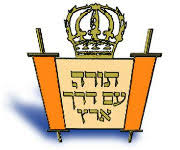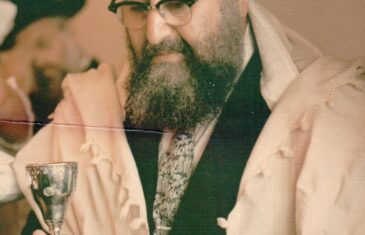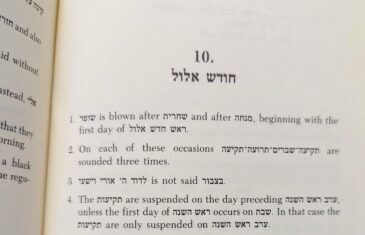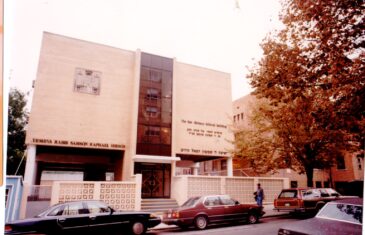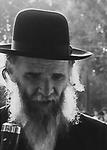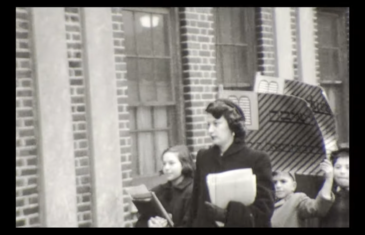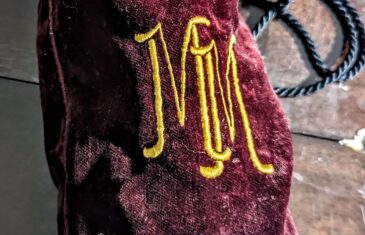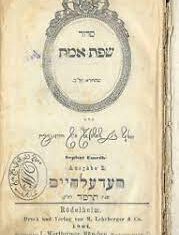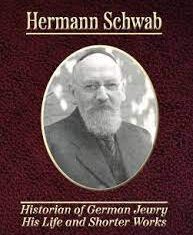This is where I hope we can exchange important information and thoughts regarding minhag, Jewish thought and German Jewish history. These are all topics that I enjoy and have had some exposure to. There are some excellent sites in the Frum blogosphere that handle these subjects with very capable academic authorship. I don’t have much […]
Read moreI can think of two stories about a Siddur. Naomi Grunfeld, daughter of the notable Dayan in London, penned a story about an old Roedelheim siddur, as she heard it from her mother, and put it in the Yated Ne’eman over a decade ago. The story is here, and a scan of the article is […]
Read moreThis post is long in the making like most things I plan to do – that quickly become victims of procrastination. Things just hit a peak so I am sitting down to write this at a school bball game. A renewed interest in Minhag Aschkenaz is emerging in the broader Jewish communities and Yekkes outside […]
Read moreBecause I haven’t written in a long time and it is almost Purim, I want to put a few thoughts together. This year we observed Rav Schwab’s Yahrzeit on Purim Katan as it was in the year he passed away. Elsewhere I wrote a Remez beween Rav Schwab’s name and Lag B’omer (which is alluded to in the Rema […]
Read moreIt feels like this month slipped away since so much of Elul was shared with the American summer vacation months. Until schools were underway (I am in Jewish Education), it was already a week until Rosh Hashanah. Let me add a note about our beautiful minahgim. We know that KAJ blows Shofar in Elul at Shacharis and Mincha. Three Tashrats are […]
Read moreA few months ago a very idealistic and dedicated woman in our community contacted me as she was preparing to give a tour of our Shul to a Modern Orthodox day school from a nearby suburb. She only asked for some media for her tour (photos of the past rabbonim), but I gave her a […]
Read more(“Eretz” was the way many German Jews referred to Israel for short.) The story of Torah im Derech Eretz in Eretz Yisrael is a long and complex history that is bigger than me and this little blog. Dr. Marc Shapiro – in his book on Rav Yechiel Y. Weinberg zt’l- recounts the story of the Hildesheimer seminary considering a […]
Read moreTonight, in the neighborhood in which I now live, there will be bonfires to celebrate the Hilula Derashbi. As children, we never heard about the Rabi Shimon element of Lag BeOmer. It was all about the talmidei Rabi Akiva and the bow & arrow games. Today ideas of kabbalah and chasidus have become more widely known and as we will become […]
Read moreSee the picture above. This was Dad’s tefillin bag in an era when they looked like this. Because we share initials, I have begun using it for now. On the recent Chol Hamo’ed, I davened in a local Brooklyn shul that davens Nusach Aschkenaz (Artscroll) and the Baal Tefilla wars Tefillin. I spent most of Davening counting the percentage of Tefillin wearers ad […]
Read moreElsewhere, we have written extensively about the implications of the closing phrase of the kedushas hayom within the Shabbos Amida. Specifically, the minhag is described as that of Frankfurt: ” Veyismechu vecho ohavei shimecha”. The firm halachic foundation and history that this nusach stands on was covered in the very first volume of Rabbi Hamburger’s […]
Read moreRecently, I had the great pleasure of reading an anthology of the smaller works of the famed popular historian, Mr. Hermann Schwab z’l. “Hermann Schwab. Historian of German Jewry: His Life and Shorter Works” is distributed by Feldheim Books. For full disclosure, I will mention that for a long time I have had a […]
Read more
